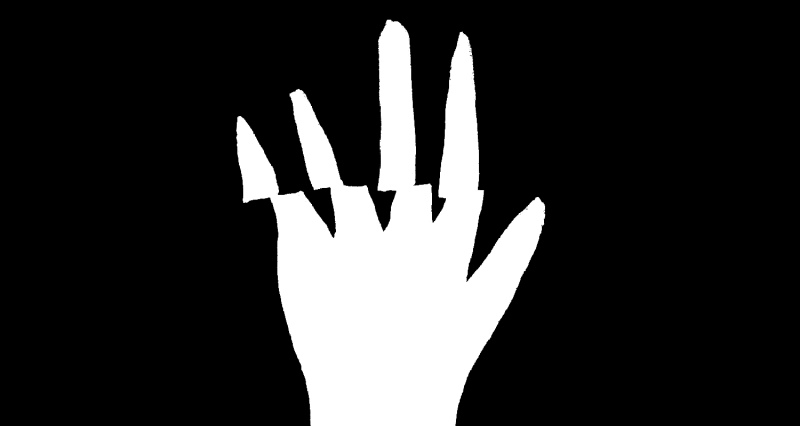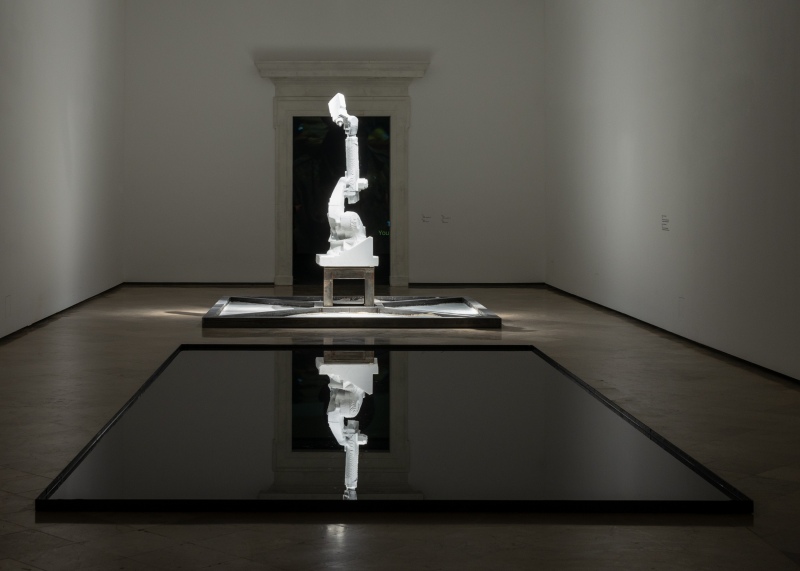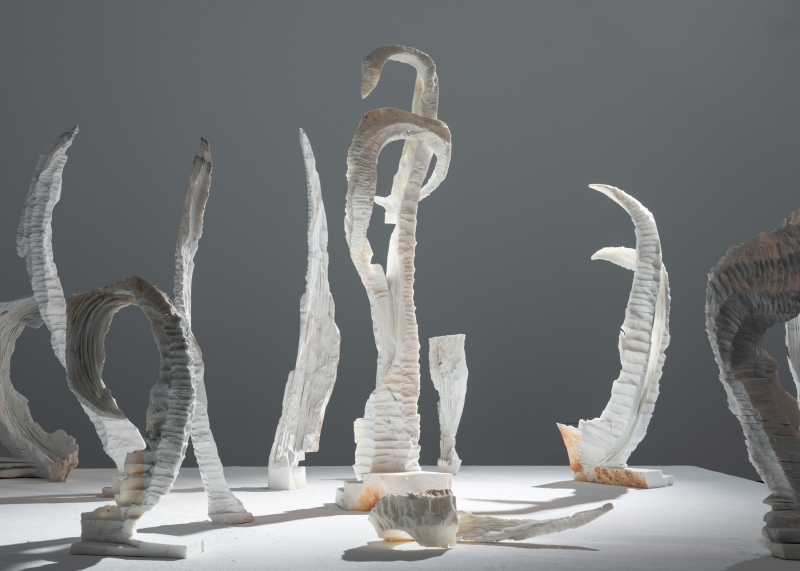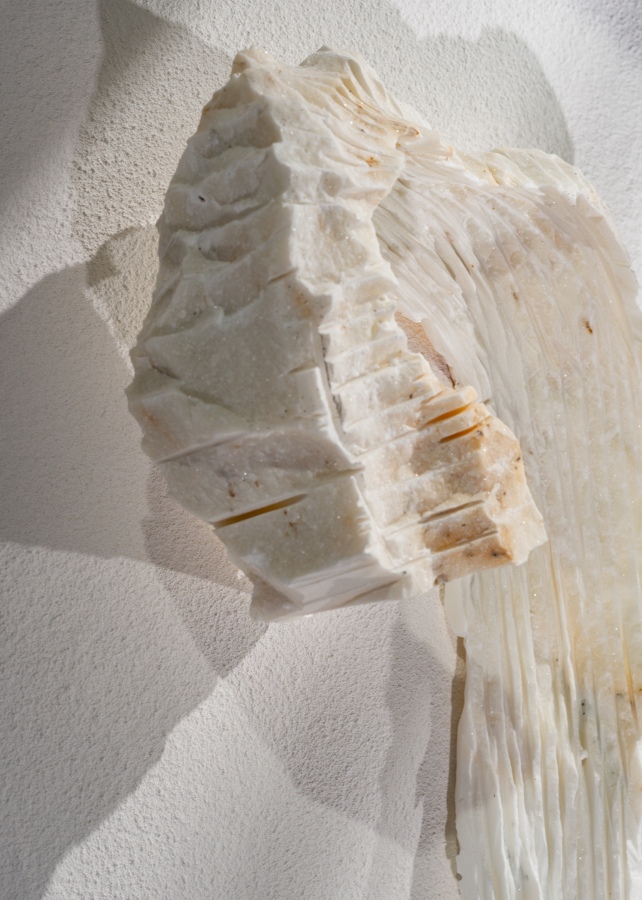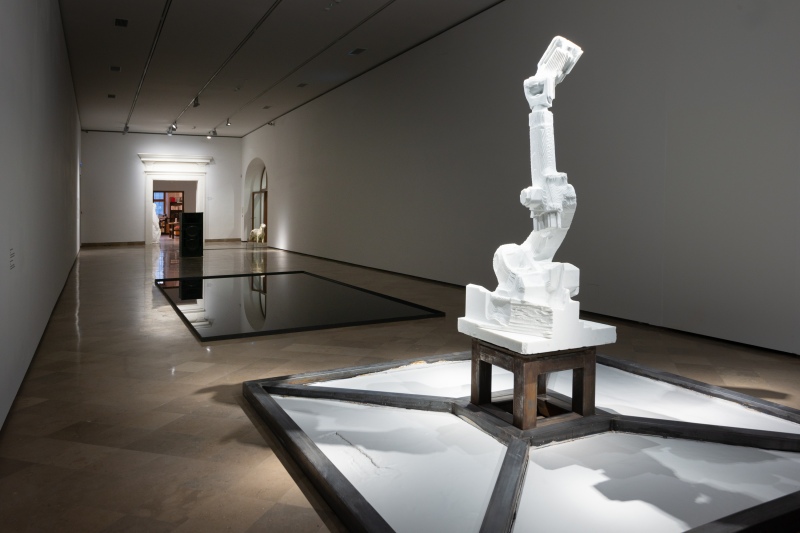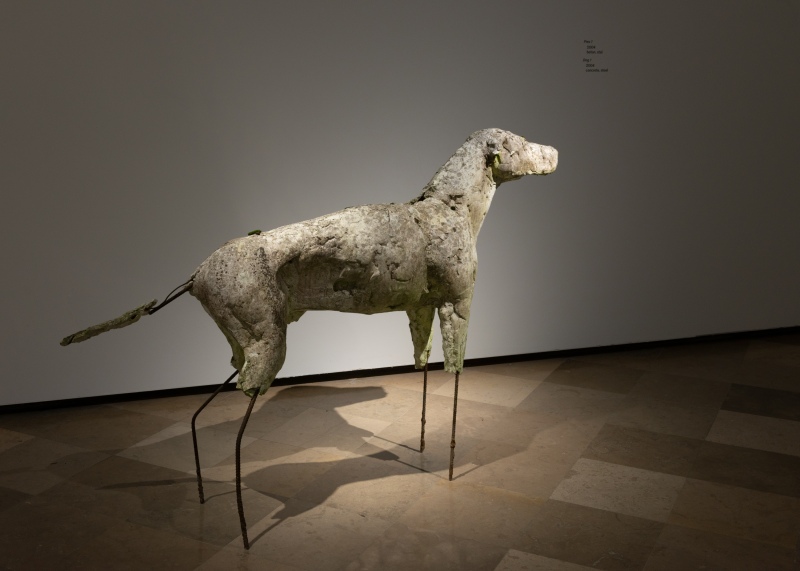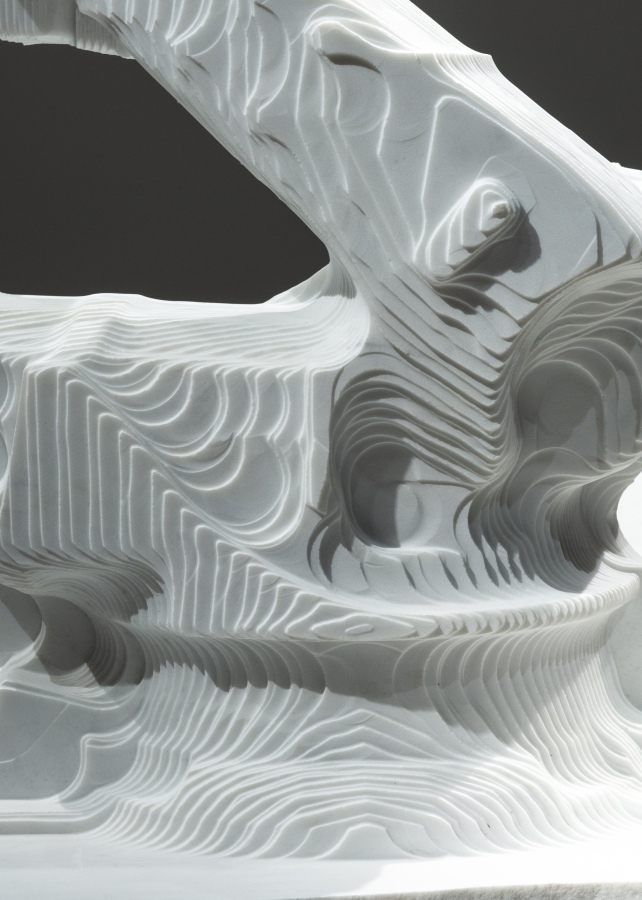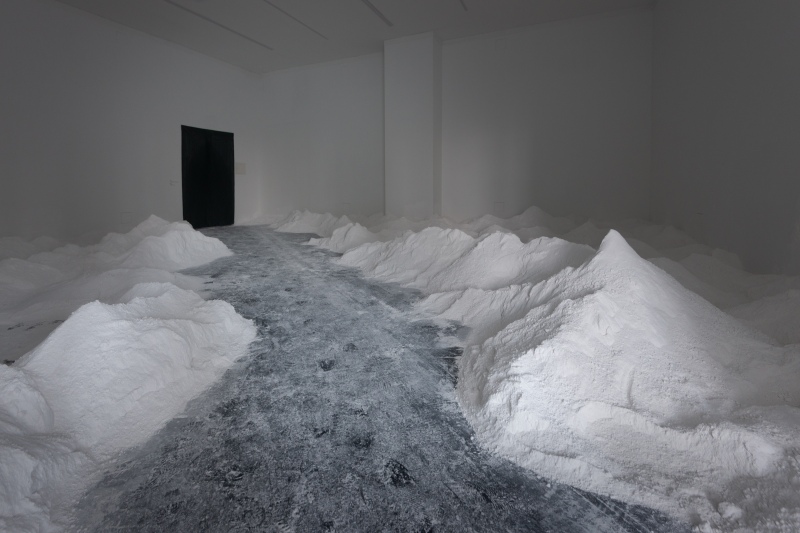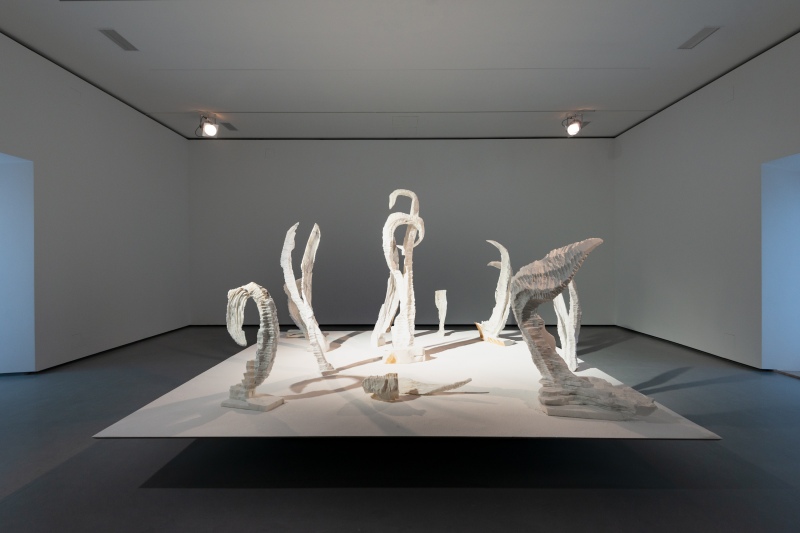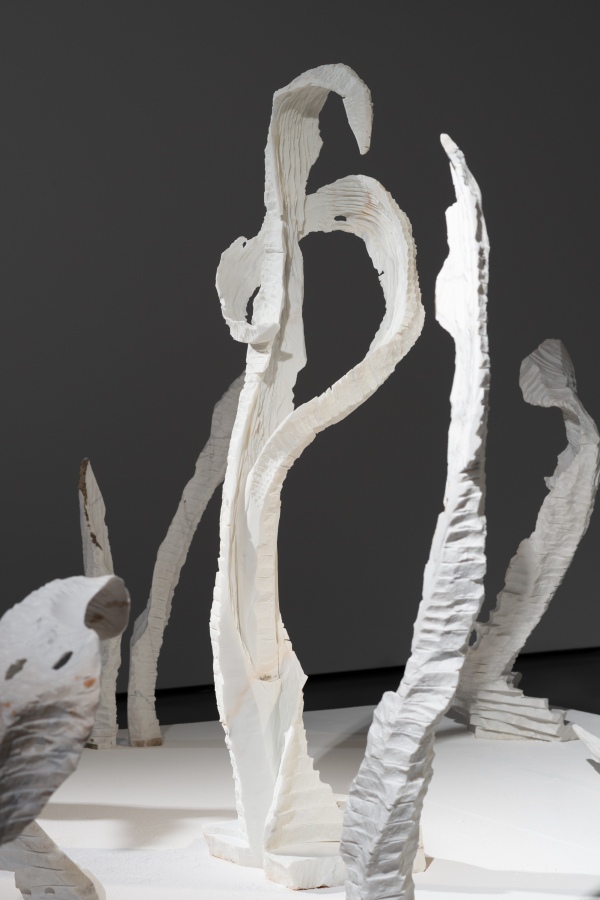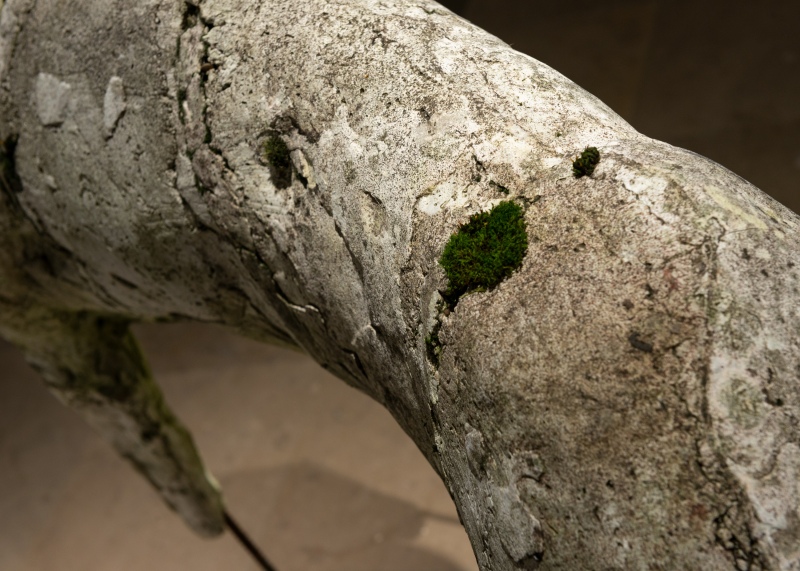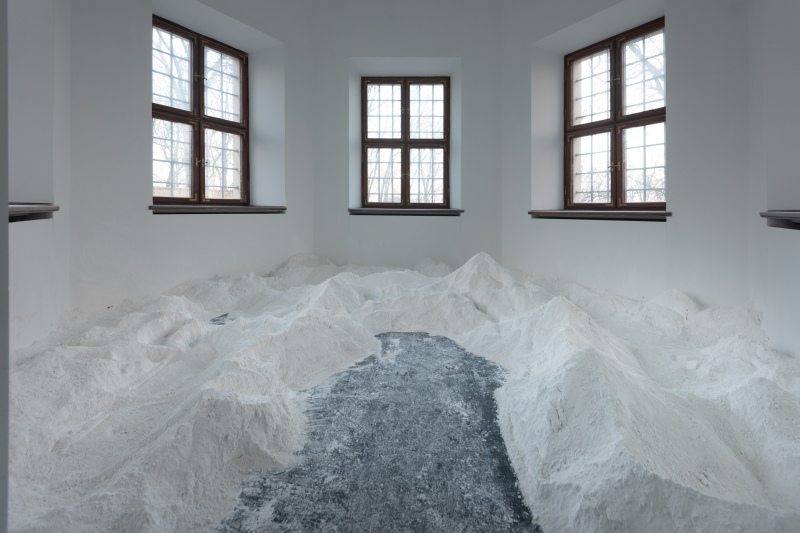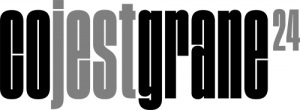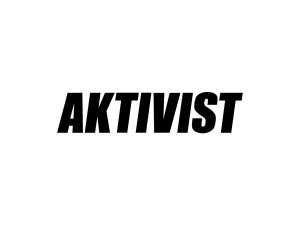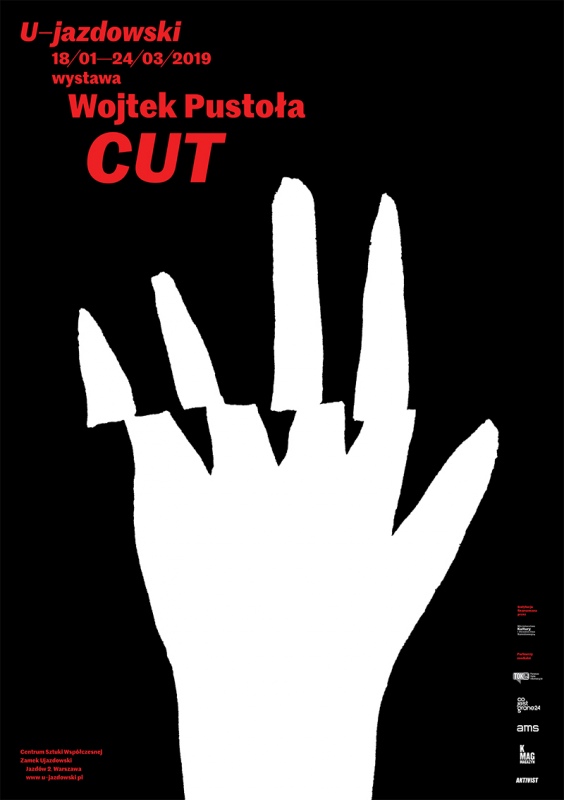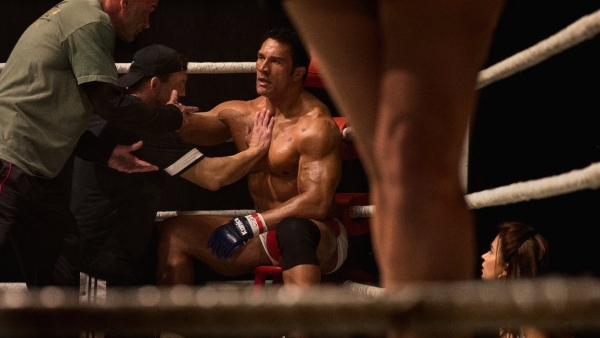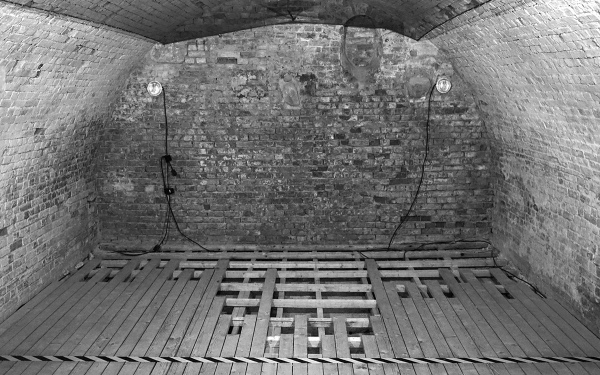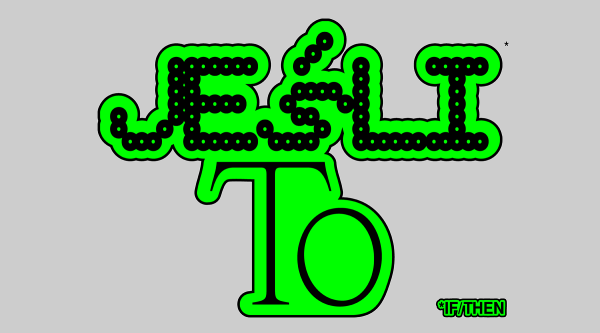Wojtek Pustoła
CUT
It is hard to imagine a more noble material than marble. It is hard, too, to imagine a more pretentious material. Although, in the realm of contemporary art, marble is highly problematic, this is the material sculptor Wojtek Pustoła chooses to work in.
A stretch of twenty kilometres of the Apuan Alps rising above the small Italian town of Carrara contains a stone which, depending on its quality, varies from pure white – through a spotted structure – to shades of grey. The structure of the crystals comprising Carrara marble instills a unique property that allows it to undergo sophisticated processing. For this reason, the history of sculpture is closely related to this particular stone. White marble is called the "sacred stone" by sculptors and is treated with almost religious respect. For others, marble has become a symbol of the vanity fair – kitchen worktops, balusters, washbasins, sheikhs' palaces. Above all, marble is a past from which one can't escape – forming ancient colonnades, Renaissance cathedrals, and sculptures by Michelangelo. However, its future is unclear. The only thing we know for certain is that dust is currently its most desirable form, and robot its most efficient sculptor.
The CUT exhibition is an attempt to present a microcosm of Carrara with its immanent element – marble. It's also an epilogue to the artist's full-length film White Cube (2018).
Based on the sound produced when the stone is struck by a hammer, one can assess its quality and internal structure. It is like a living organism that has its skin, its system of veins and internal cracks. It can be delicate and brittle like Parmesan cheese, hard like a lump of glass, transparent like onyx or opaque like granite. As Carrara's sculptors and craftsmen say, marble has its own will. This makes it all the more difficult for them to accept the progressive mechanization of sculptural craftsmanship, personified by the "Antropomorfo" robot, which is able to reproduce any three-dimensional form in marble. All you need to do is send the file by e-mail. It is often used by celebrities in the world of art and architecture because the robot, although designed on the basis of human hand movement, works faster and more precisely. This has far-reaching consequences for the ethos of traditional craftsmanship in Carrara, the effectiveness and efficiency of artistic production, the relationship of power between employees and employers, and the value of the works created here.
The title, CUT, can be translated in many ways, the particular meanings of which can be found at the exhibition. The most frequently used meaning in this context refers, first of all, to the cutting of marble blocks. Meaning associated with injury introduces a human factor into the story, related to craftsmen working physically in stone processing, but also to artists and their creative struggles and sometimes even wounded egos. CUT may also denote a reduction, referring to the brutal exploitation of minerals, literally reducing mountain massifs, but also to the scraps and remains of material, and to what remains on such a mountain, i.e. sludge and dust, which are used increasingly in industry.
Marble dust is in everything – in toothpaste, adhesives, bars, and modified milk for babies. It is the only stone dust from which you do not need to protect yourself while working. Carrara marble is 100% organic limestone, sea shells compressed billions of years ago.
The sculptural technique of Wojtek Pustoła is brutal – his main and only tool is an angle grinder, unthinkable for many chisel virtuosos. This technique generates more waste than sculpture, which is also not appreciated by professionals.
In film nomenclature, "Cut!" indicates the end of recording of a scene. A cut is also used in film editing, and film is the another important medium for Pustoła. The exhibition at the U–jazdowski Cinema will be accompanied by special, pre-premiere screenings of White Cube, a full-length documentary in which Pustoła tries to capture the complexity of the small Tuscan region famous for its marble. The film also features a story about the decline of the traditional craftsmanship cultivated over the centuries and of a particular method of creative work, relying on the artist's close contact with the material and the painstaking process of sculpting. The artist's ironic commentary on the radically changing employment relationships in Carrara is the central figure of the exhibition - the self-portrait of the Antropomorfo robot. Self-aware creation by machines seems unavoidable. Man has no future.
Pustoła's exhibition is also a reflection on traditional values in art, such as beauty and respect for nature, the harmony of which the sculptors who come to Carrara try to reflect. On the other hand, marble is a gigantic industry driven by purely mercantile motives, resulting in conflicts and tensions among the people involved in the treatment of this white rock, including those with unfulfilled artistic dreams. It is not only to the struggle between the artist and his own artistic ambitions, against conservative values in contemporary art, but also to the expression of his great passion for the phenomenon of this stone, which Pustoła has devoted the recent years of his creative work.
